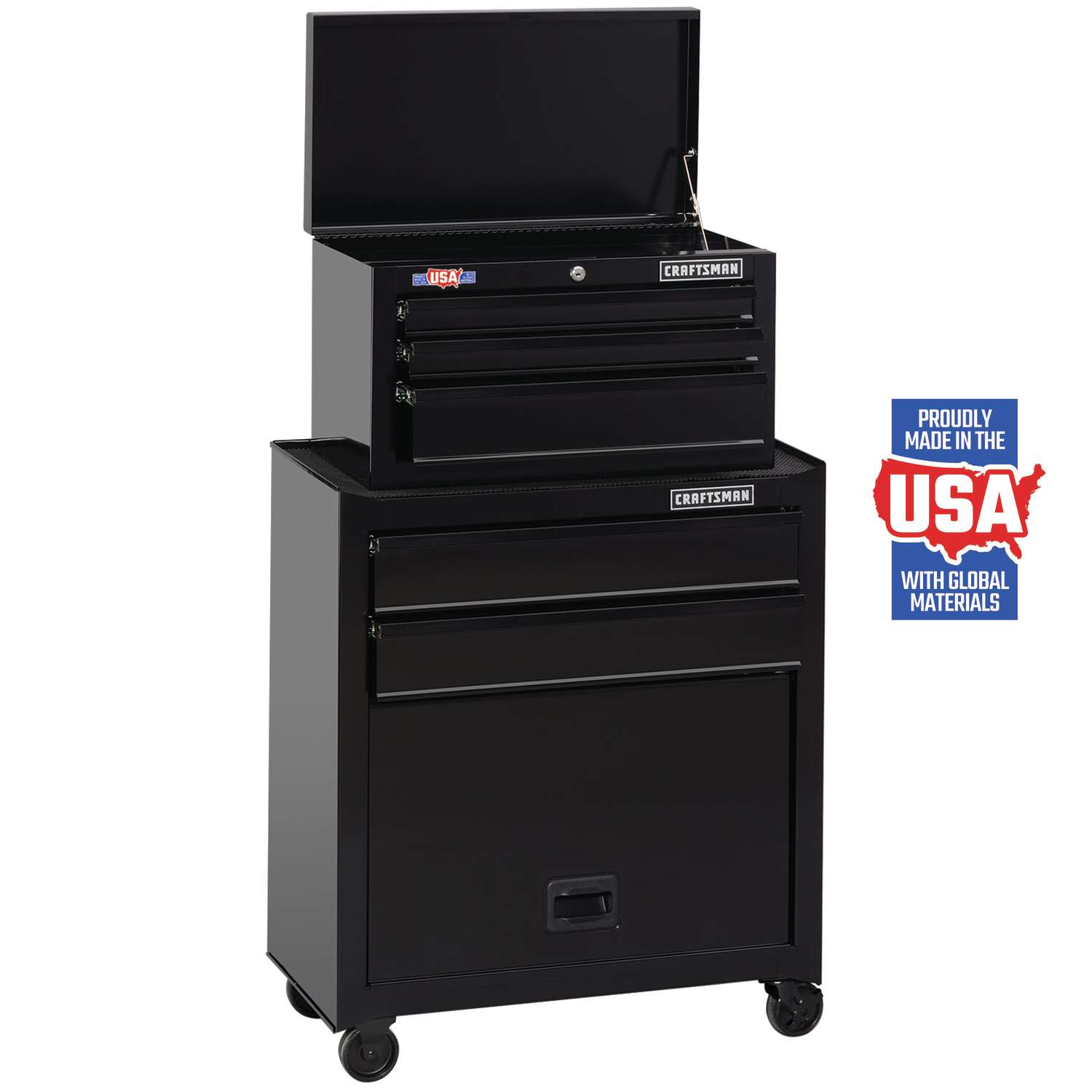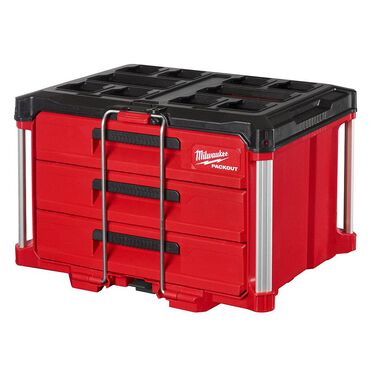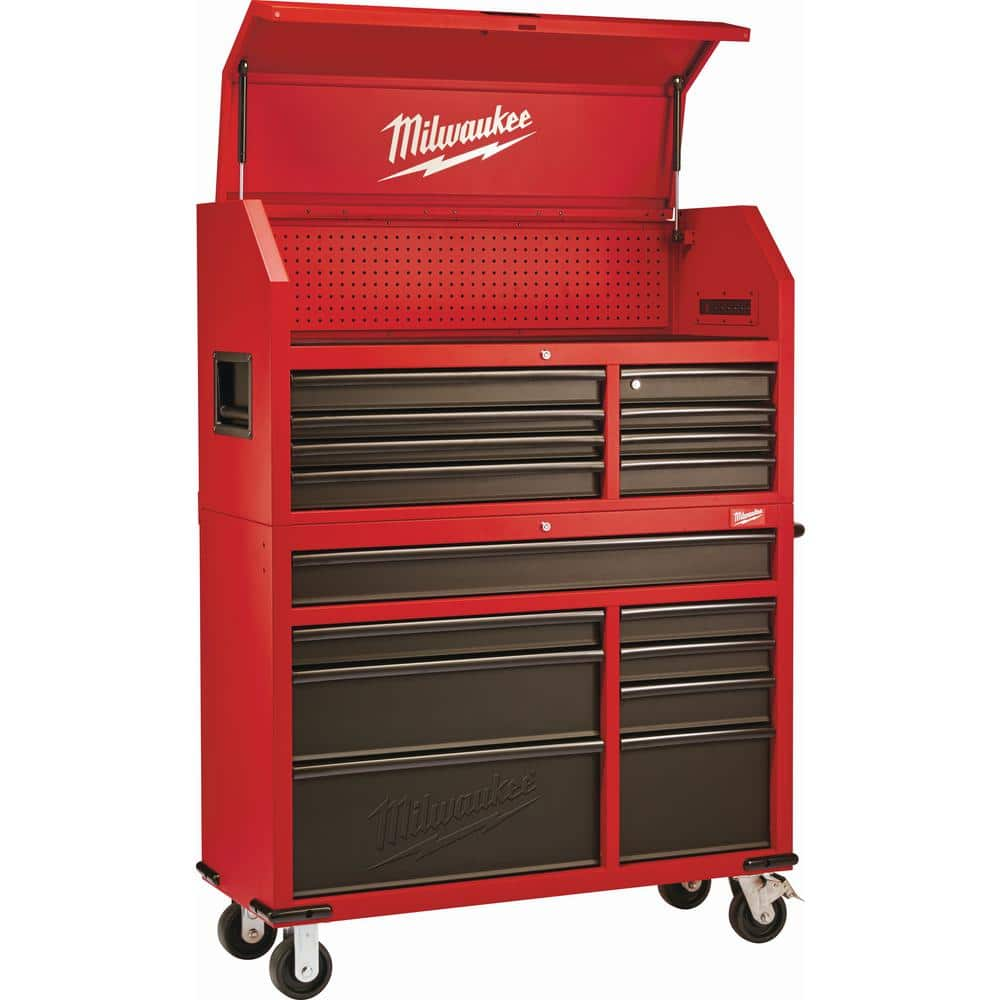Craftsman 26.5 in. 5 drawer Metal Ball-Bearing Tool Center 45.5 in. H x 14 in. D Black
-
( 7 Reviews )Rated 4.71 out of 5 based on 7 customer ratings07
The Craftsman 5 Drawer Tool Center provides an excellent value for all tool storage needs. 5 Drawers provide storage for hand tools and power tool accessories.
SKU:
2884419
Categories: Tool Equipment & Storage, Tools
Tag: Craftsman 26.5 in. 5 drawer Metal Ball-Bearing Tool Center 45.5 in. H x 14 in. D
-
Milwaukee PACKOUT 3-Drawer Tool Box – 48-22-8443
Rated 5.00 out of 507Milwaukee PACKOUT 3-Drawer Tool Box – 48-22-8443
Rated 5.00 out of 507 -
DEWALT-DCKSS521D2 20V MAX Brushless 5-Tool Kit with Soft Storage
Rated 5.00 out of 502DEWALT-DCKSS521D2 20V MAX Brushless 5-Tool Kit with Soft Storage
Rated 5.00 out of 502
The Craftsman 5 Drawer Tool Center provides an excellent value for all tool storage needs. 5 Drawers provide storage for hand tools and power tool accessories. Bulk storage area for larger items. Craftsman products are being engineered and manufactured in the USA, using materials from around the world. Our top of-the-line metal tool chests and rolling cabinets are coming off assembly lines in Sedalia, Missouri. These tool storage products are designed and built to protect the tools you rely on.
- Proudly Made in the USA with Global Materials in Sedalia, Missouri
- BUILT TO LAST: 20 – 24 ga steel construction
- FULL EXTENSION, soft CLOSE DRAWER SLIDES: Support 30-lb of product
- LOCK AND SWIVEL: 300-lb load rating with 3-in x 1-in casters: two lock and swivel
- SAFEGUARDS YOUR TOOLS: Internal keyed locking system
- NON-SLIP MAT: Non-slip open weave top mat protects the surface of the rolling cabinet
- 10,227 cubic inches of storage
- Assembled Dimensions (WxDxH) 26.5 x 14 x 44.25-in
Additional information
| Depth | 14 in. |
|---|---|
| Height | 45.5 in. |
| Width | 26.5 in. |
| Storage Volume | 9916 cu. in. |
Average Rating
4.71
Rated 4.71 out of 5 based on 7 customer ratings
075 Star
71.43%
4 Star
28.57%
3 Star
0%
2 Star
0%
1 Star
0%
Submit your review Cancel reply






by Andrew
Great price for a great product. Versatile and easy to assemble. Great quality product.
by Alex
Excellent tool chest for the price. Didn’t need anything fancy for my garage and this is perfect. Only downfall is no lock for the bottom drawers.
by Thomas
Arrived quickly, easy to assemble, drawers are very well usable, and exact measurements as described. Definitely a reorder as ordered for daughter after getting mine.
by Jeff
My husband loves it! And we love how QUICKLY it got shipped to us. Even during the snow.
by Bill
So far so good. Have not used it full time yet. But it appears to be what I was seeking.
by Eddie
I like it but i would love it if the bottom drawers and cubby would also lock and if it came with drawer liners!! Other than that bits great!
by Tom
This product is awesome, the only draw back was the directions. It made it super hard to understand and put together.